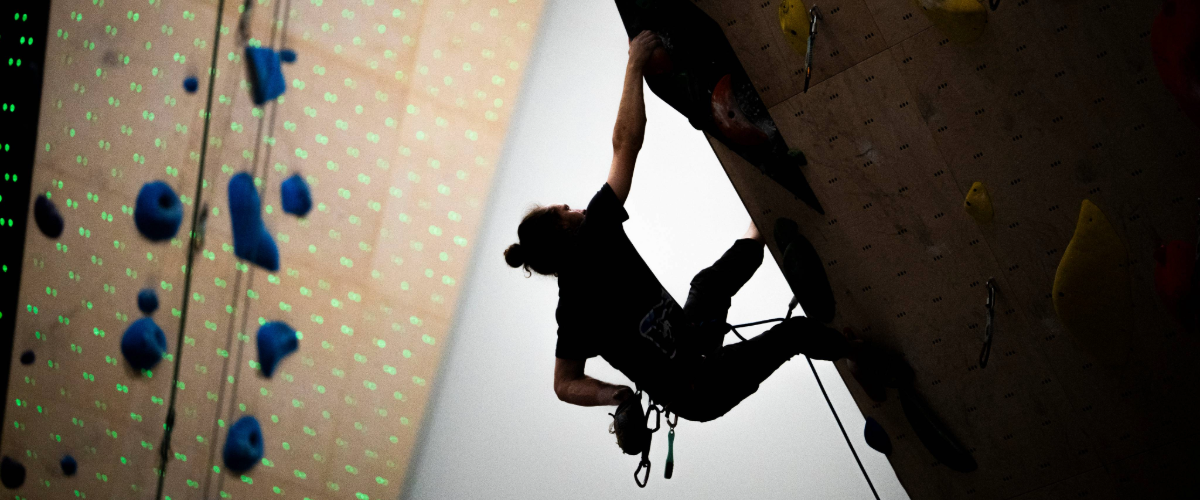Someone Just Hit The Ground: What Happens Next?

On February 18, 2001, NASCAR driver Dale Earnhardt was killed in a crash involving three cars on the final lap of the Daytona 500. After making contact with two other cars, Earnhardt’s vehicle hit the wall at an angle, with the right front of the car making contact with the wall.
Watching live (or on replay, as I did), the crash didn’t seem that serious. The other drivers knew, however. As Earnhardt was being removed from his car, one of the other drivers was quoted as saying, “I’m worried about Dale. That was a bad one.” He was right; Earnhardt was subjected to violent sideways force and sustained a fatal basilar skull fracture. In the aftermath of the crash, it was disclosed that Earnhardt was not wearing a HANS device – a collar that surrounds the head and neck and guards against violent sideways whiplash.
NASCAR mandated the device after Earnhardt’s death.
Article At A Glance |
|
Thankfully, fatal accidents in indoor climbing facilities are exceedingly rare. But emergencies in the gym come in all sizes. Most are minor – sprained ankles from bouldering falls or jumps, an occasional dislocation or fracture, and so on.
But no injury is minor from the standpoint of legal liability and insurance coverage. That’s why climbing gym operators have to be prepared for the moment a climber hits the floor. The following elements are crucial to any crisis response and can give you a plan to follow.
Remember to document what happened and your response. Competent adults can refuse first aid and/or medical care. If they do, you will want to document the refusal.
Assessment (a few seconds to a few minutes):
Attend to the injured party or parties. Do a rough triage of the injuries. Depending on the injury, offer first aid or offer to summon EMS. If you decide to summon emergency response, reassure them that help is on the way. Keep them comfortable. Move them to a safe and comfortable location unless to do so might injure them further.
This is absolutely crucial because (a) it’s the right thing to do and (b) you don’t want to explain to a jury that you didn’t offer immediate assistance.
Immediate Response (a few minutes to an hour or two):
Notify the injured party’s emergency contact unless they say it is unnecessary. Triage the cause of the accident. For bouldering, that will be pretty clear. For roped climbing falls and auto belay falls, you will need to start investigating as soon as possible. Speak with all staff members who witnessed the accident.
Wanting to Avoid Risk?
Join the CWA for our upcoming Member Education Series Webinar on the CWA's newly released belay orientation videos. Hosted by Monument Sports Group, which helped fund the project, learn about these videos and how they could potentially be used in your facility.
Did the climber forget to clip in, or clip in to a gear loop? Did the belayer lose the belay? Was there an equipment failure or a loose hold? Did the flooring contribute to the injury? The answers to these questions will help you determine if you need to inspect and/or take out of service any personal protective equipment or shut down the wall or route. Preserve any equipment that is suspected of failure; remove it from service and store it in a secure location.
Longer-Term Response (1-2 hours to ??):
Obtain written statements from any witnesses to the incident (staff, spectators, etc.) Notify your insurance company as soon as possible, regardless of how serious any injuries are. Your insurance contract probably requires you to do so. Depending on the nature of the incident and the seriousness of the injuries, consider notifying your legal counsel.
If the incident has attracted outside attention or contact (news media), begin the process of managing that contact. You should have a designated spokesperson, probably upper management, and a backup in case the first is unavailable. Staff should be instructed to defer questions to your designated spokesperson. Have a designated meeting area for media questions. Do not give members of the media access to the premises, structures, or equipment involved in the incident.
Do not give anyone access to those premises, structures, or equipment (except for first responders, your legal counsel, insurance company representatives, etc.) unless and until there is a court order to do so, your business is unquestionably not at fault, or such access is otherwise rendered harmless.
If there are injured parties, express regret for their injuries and state that you have rendered or are helping them as needed. Know whether your jurisdiction has an “apology law” (most do these days) and what it says. Do not admit fault to any person or speculate about what might have caused the incident. Be careful about turning away inquiries with “no comment;” it implies that you know something damaging, but you are not willing to say it.
State that you are thoroughly investigating what happened (but not “what caused” or “may have caused” the incident). State that you are attending to the needs of any injured parties. State that it would be premature or inappropriate to speculate as to what happened (again, not what caused the incident) before the investigation is complete.
Follow-up Communications and Practices:
Respond promptly and cooperate with your insurer and legal counsel. Respond to and cooperate with government investigators but have your legal counsel present during an inspection if possible.
Document thoroughly and keep documentation where you can easily access it. If equipment failure or malfunction is suspected, remove the equipment from service and secure it. Take photographs of any damage or suspected damage. Preserve all documents and physical evidence. Consider war-gaming an accident scenario. Have a written plan or checklist and ensure that staff have access to it and that they know the channels of communication.
About The Author
 Robert Angell is an Ohio- and Colorado-licensed attorney concentrating in the areas of administrative law, recreation, amusement, and entertainment law, and business formation. He served on the CWA Board of Directors from 2006 to 2013 and was reappointed to the Board in 2019. Bob has been instrumental in regulatory initiatives on behalf of CWA members across the U.S. since 2005. His clients include many gyms in Ohio and other states.
Robert Angell is an Ohio- and Colorado-licensed attorney concentrating in the areas of administrative law, recreation, amusement, and entertainment law, and business formation. He served on the CWA Board of Directors from 2006 to 2013 and was reappointed to the Board in 2019. Bob has been instrumental in regulatory initiatives on behalf of CWA members across the U.S. since 2005. His clients include many gyms in Ohio and other states.
